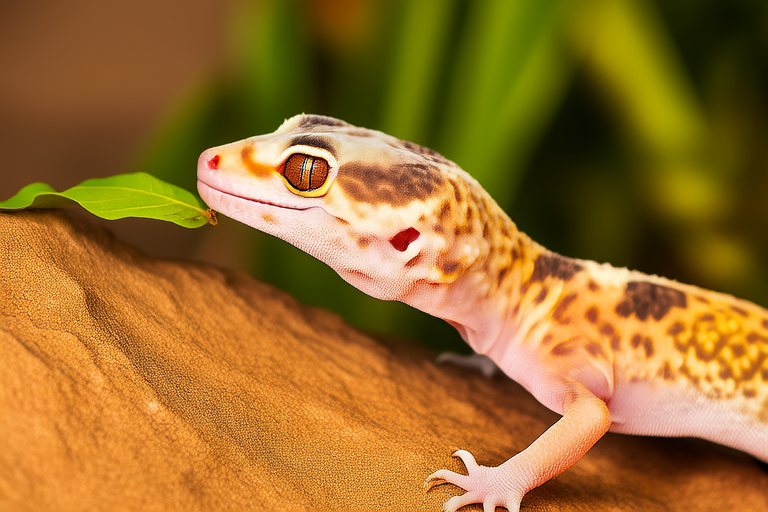Adorable Moments with Your Bearded Dragon: Capturing the Best Pet Photos
Welcome to the enchanting world of bearded dragons! These captivating reptiles, known for their quirky behaviors and striking appearance, make for some of the most delightful subjects in pet photography. Whether you’re a seasoned photographer or a beginner, capturing these adorable moments can be both challenging and rewarding. This guide will walk you through the process of taking stunning photos of your bearded dragon, from understanding its behavior to selecting the right equipment and settings.
Understanding Bearded Dragon Behaviors for Optimal Photo Timing
To get the best shots, it’s crucial to understand your bearded dragon’s behavior. These lizards exhibit various actions that signal their mood and activity level. For instance, when they puff out their beards, it usually indicates they are stressed or feeling threatened. However, this can also happen during courtship displays, so observe carefully. A relaxed bearded dragon will have a flat body and might even be basking under a heat lamp, making it an ideal time for a photo shoot.
One of my favorite moments is when my bearded dragon, named Charlie, stretches his legs out wide and yawns. It’s such a serene and peaceful moment, perfect for capturing those candid shots. Another great opportunity arises when they wave at each other or their owners. This behavior, often seen as a sign of submission, can add a playful touch to your photos. Keep an eye out for these gestures, and you’ll be rewarded with some truly special images.
Essential Photography Equipment and Settings
The first step in capturing high-quality photos is ensuring you have the right equipment. A digital single-lens reflex (DSLR) camera offers the best results, but if you prefer simplicity, a point-and-shoot camera or even a smartphone with good resolution can work well. Regardless of your choice, ensure the device has manual focus and exposure controls.
For lighting, natural daylight is ideal, especially early morning or late afternoon when the light is soft and warm. If you’re shooting indoors, use a diffuser to soften harsh artificial lights. I’ve found that a simple white sheet works wonders in creating a gentle, flattering glow. In terms of lenses, a macro lens allows you to capture intricate details like the texture of your dragon’s skin or the tiny scales on its toes.
When setting up your camera, start by adjusting the ISO to around 400 for indoor shots and 200 for outdoor ones. This helps reduce noise while maintaining good exposure. Set your aperture between f/8 and f/16 for sharpness across the frame. Finally, choose a shutter speed that freezes movement; anything faster than 1/250th of a second should suffice.
Creative Photo Ideas Showcasing Their Unique Features
Bearded dragons possess many distinctive characteristics that lend themselves beautifully to creative photography. Start by focusing on their facial expressions – those expressive eyes and quirky little mouths can tell a story all by themselves. Try photographing them from different angles, including close-ups of their faces, side profiles showing off their spiky crests, and full-body shots highlighting their elegant postures.
Another fun idea involves incorporating props into your photos. You could place small rocks or branches within the frame to give context to your dragon’s environment. Alternatively, consider using accessories like colorful scarves or hats (yes, you read that right!) to add a whimsical element to your shots. Just remember to keep everything safe and non-toxic for your pet.
Personal anecdote: One day, I decided to dress Charlie up in a tiny red bow tie. His reaction was priceless – he looked so dapper yet completely bewildered. The resulting photo became one of my favorites because it perfectly captured both his charm and innocence.
Maintaining a Stress-Free Photo Session Environment for the Pet
Creating a comfortable space for your bearded dragon is paramount to ensuring a successful photo session. First, ensure the temperature remains consistent throughout the room where you’re working. Bearded dragons thrive in environments ranging from 75°F to 95°F (24°C to 35°C), so monitor this closely using a thermometer.
Additionally, provide plenty of hiding spots such as caves or plants. This gives your dragon options if they feel overwhelmed by the presence of the camera or photographer. Always approach your pet gently and calmly, speaking softly to reassure them. Avoid sudden movements or loud noises that may startle them.
Lastly, remember to take frequent breaks during the session. Like any subject, bearded dragons need time to rest and recharge. Allow them to explore their surroundings freely without constant interruption. By respecting their boundaries and providing comfort, you’ll foster trust and create an enjoyable experience for both you and your pet.
High-Quality Image Descriptions to Enhance Reader Engagement
Here are some examples of how vivid descriptions can bring your photos to life:
- Close-Up Portrait: “In this intimate portrait, we see every detail of Charlie’s face – from his piercing amber eyes to the delicate ridge along his jawline. His beard, slightly puffed out, adds an air of mystery to the image.”
- Full-Length Shot: “Charlie poses gracefully against a backdrop of vibrant greenery, his long tail curling elegantly beneath him. The soft sunlight casts gentle shadows across his scaly skin, highlighting the intricate patterns unique to each individual bearded dragon.”
- Playful Moment: “Caught mid-wave, Charlie looks almost human-like in this candid shot. His hand raised in greeting, he gazes directly into the lens with what appears to be genuine curiosity.”
By incorporating these rich descriptions alongside your photos, you’ll transport readers straight into the heart of each memorable moment shared between you and your beloved bearded dragon.
